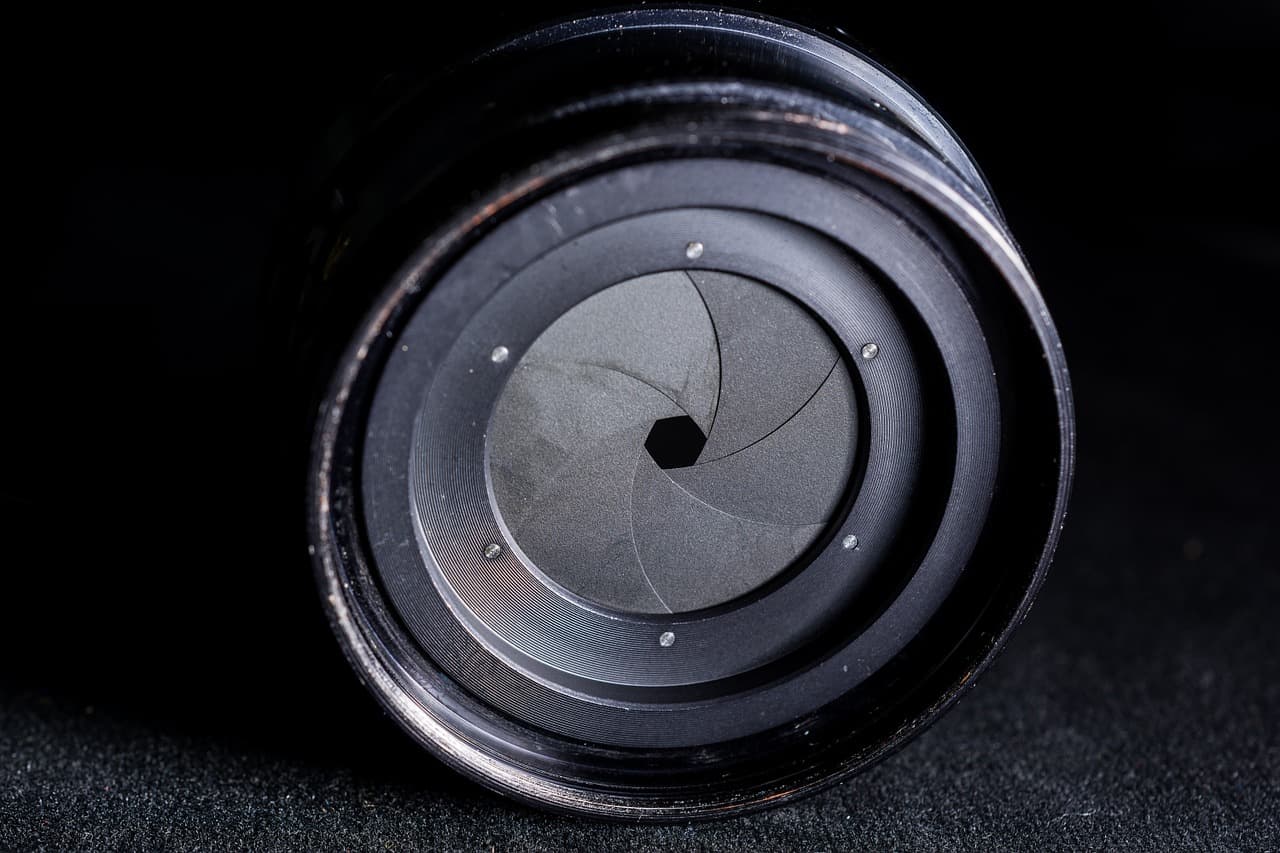Our guide to what a lens aperture does and how the aperture affects footage when shooting video
If you are used to using a camera for stills photography, then you will find that the lens aperture control works much in the same way during shooting video as it does when capturing stills.
It has two basic functions. Along with the shutter speed and the ISO control, the lens aperture is one way of controlling the exposure. The aperture is the diaphragm of the lens, which can be opened and closed to regulate the amount of light hitting the sensor.

Lens aperture is described in f-stops
Lens aperture is described in F-stops that – depending on the lens – typically runs from f/1.2 up to f/16 or f/22. The lower the number, the wider the aperture is. So for example, an aperture of f/2 is wider and will allow more light in, than an aperture setting of f/16, which is narrow.
Each time you close or open the aperture by one whole stop, you’re halving or doubling the amount of light that you’re letting pass through the lens. But the numbers don’t relate to this mathematically or numerically. For example, an aperture of f/4 allows twice more light in than an aperture of f/5.6 and f/8 only allows a quarter of the amount of light that a setting of f/4 does.
Depth of field
But the aperture has another function that is very important to the look and feel of your video. The aperture controls how much of the scene is in focus in front of and behind the area that you’ve focussed on, this is known as the depth of field.
Typically with basic camcorders and compact cameras, everything is in focus during video recording, from about a metre away from the camera to infinity. But with cameras like DSLRs and some compact system cameras now, which have larger sensors, you get a much greater sense of depth. This is great for videographers because it can help us create much more professional looking videos.
If you’re filming a person for example, having a wide aperture will allow you to make the background out of focus. This helps to remove potential distractions that could take a viewer’s eye and attention away from your subject.
Most television shows and films use a shallow depth of field so that only the actors speaking are in focus, to do this, you need to use a wide aperture, from about f/2 to f/5.6 depending on the lens and how much of the scene you want in focus.
 Zoom lenses
Zoom lenses
Most zoom lenses have a maximum aperture of around f/4-f/5.6 and often that aperture gets narrower the more you zoom. With prime or fixed focal length lenses, you generally get a wider maximum aperture of f/1.4 or f/1.8, which enable you to get even shallower depth of field. There is a downside to having shallow depth of field though. If you choose extremely wide aperture settings, the area of focus is very shallow and even if your subject is moving slightly, they will drift in and out of focus. The affect can be used well for artistic purposes but if it’s not your intention it will look unprofessional.
Hopefully we’ve cleared up some of the questions you’ve had around aperture settings. Still confused? Try not to be caught up with the numbers too much.
Just remember that low numbers are wide and allow more light in, creating a brighter image with a shallow depth of field. While high F-stop numbers allow less light in and keep more things in focus.







